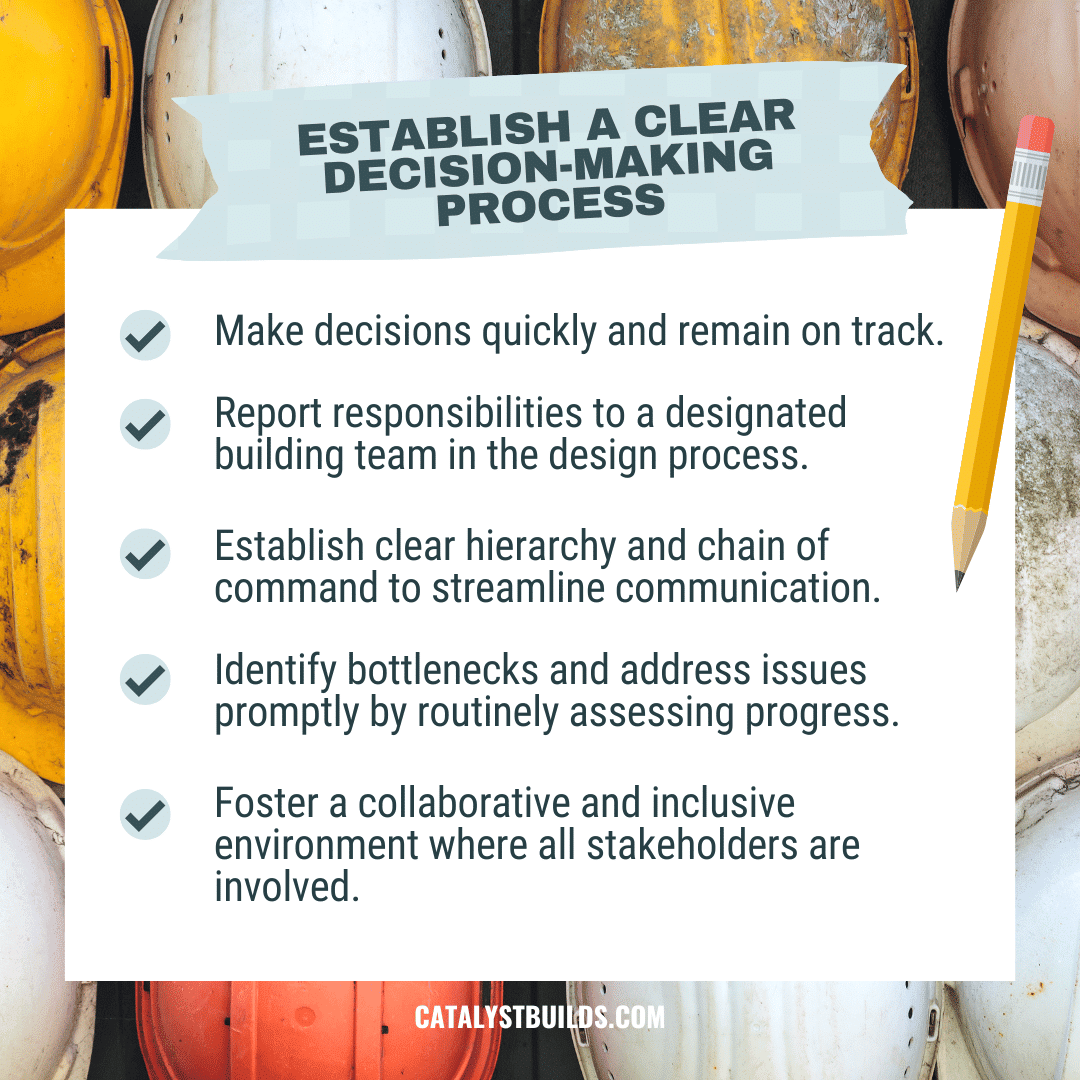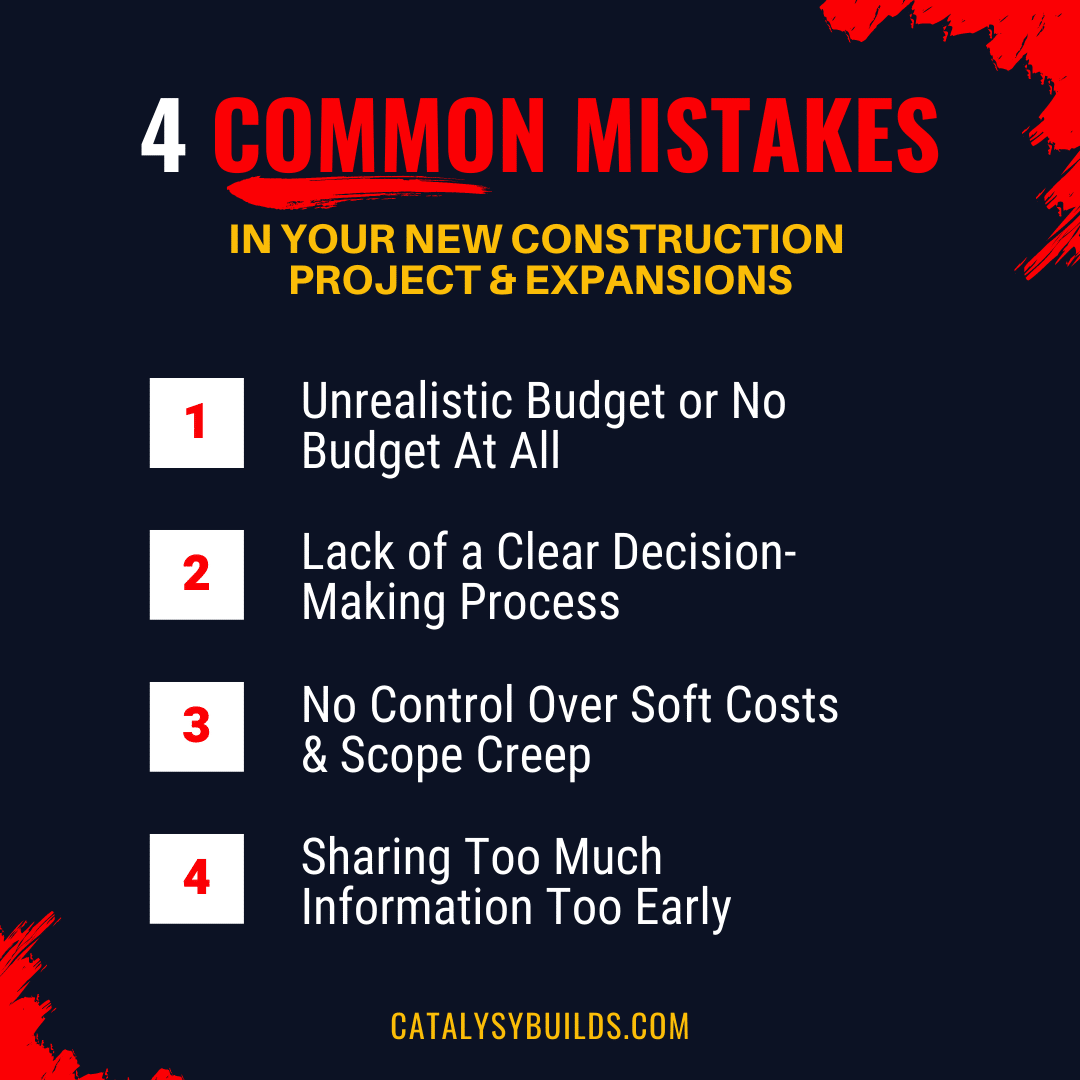Over the last several years, I have met with a handful of clients who have realized well into the due diligence phase that the vision they set out to achieve for their new construction project or expansion project would not happen.
I was brought in to help set up a new course to raise the project from the ashes before the entire vision was either put on hold or canceled altogether. By closely assessing the situation, I uncovered an unsettling reality that the project was stalling out.
Unfortunately, this is a situation I have seen far too many times in the church construction world. Leadership is forced to slam on the brakes and bring the project to a complete stop, resulting in frustration and tough conversations between pastors and their congregations. Pastors have to then explain to the congregation and generous donors that the vision they once had would no longer come to fruition.
New church and school construction projects are filled with excitement and challenges. The opportunity to build a space that supports the growth of a congregation or community and expands its impact on God’s kingdom is truly inspiring.
Amidst the enthusiasm, excitement, and challenges of church construction projects, it’s important to set realistic expectations and make informed decisions to ensure successful outcomes. To achieve this, you must avoid the following four common mistakes often made in the early stages of a new church or school project.
4 Common Mistakes Made with New Construction and Expansion Projects
It’s rarely one thing that leads up to the stalling of a project. The reality is that a handful of avoidable decisions are commonplace in almost every situation I deal with.
Here are the four most common missteps churches and schools make entering into a new construction project:
1. Unrealistic Budget or No Budget at All
Tony Robbins said it best. You can’t hit your target if you don’t know what it is. Starting a new construction project without a realistic budget or no budget at all can set the project up for failure right from the beginning.
It is essential to clearly understand your financial constraints and resources before embarking on the design journey. Here are warning signs to watch for when it comes to budgeting for your project:
Starting the Process without a Possible Financing Plan
Conversation with a financial institution is critical before embarking on a new construction or expansion project. Understanding your financing options and discussing your “debt tolerance” helps determine the project’s feasibility and set realistic expectations.
Capital Campaigns That Fall Woefully Short of Their Goal
Capital Campaigns go hand in hand with financing. Relying on fundraising to cover a significant portion of costs associated with a construction or expansion project can be expected. If the fundraising goal is unobtainable, it will lead to disappointment and insufficient funds. Here are some steps to help you set realistic goals:
- Conduct thorough research to set a realistic fundraising target
- Understand the giving capacity of your congregation or community
- Seek advice from competent fundraisers to determine an appropriate fundraising goal
Lack of a Major Gift Strategy or a Poorly Executed Strategy
Securing significant donations without a clear strategy or a poorly executed one can be challenging. The problem often stems from not taking the time to share the vision with high-capacity givers. Asking for large financial contributions can be uncomfortable for many, which can hinder fundraising efforts.
However, it has been proven that the right strategy and coaching, will yield big results. These simple steps can enhance the changes of substantial contributions:
- Develop a strategic approach
- Identify potential major donors
- Creating personalized engagement plans for each
Lack of a Clear Vision For The Problem You Are Solving
People need to understand the importance of the new construction project and how it aligns with the mission and vision of the organization. Clearly communicating the benefits and long-term impact will inspire people to contribute financially. Without a compelling vision, generating enthusiasm and support from the congregation or community becomes challenging.
2. Lacking a Clear Decision-Making Process and Structure
A lack of a clear decision-making process and structure can hinder the progress of your new construction project. When there is a lack of clear communication and indecisiveness among the executive team, it can lead to delays and impede progress.
To address this challenge:
- Decisions need to be made quickly and remain on track.
- Responsibilities to sub-committees in the design phase need to be reported to a designated building team, empowered to make decisions within the project
- A clear hierarchy and chain of command need to be established within the decision-making to better streamline communication and avoid confusion.
- Identifying bottlenecks and addressing issues promptly by regularly reviewing and assessing progress.
- Fostering a collaborative and inclusive environment where all stakeholders have the opportunity to provide input and contribute to the decision-making process.
Empowering a designated decision-making team is crucial to keep the project moving smoothly. This team should have the authority to make necessary calls and maintain momentum, avoiding unnecessary delays.
3. No Control Over Soft Costs and Scope Creep
When beginning the design process of a new construction project, it’s essential to consider certain factors to avoid budget and timeline issues.
- Soft costs which go beyond construction expenses. This includes permits, fees, and furniture/fixtures/equipment (FFE). Underestimating these costs can lead to financial strain down the line.
- Collaboration with experienced professionals. Experience contractors provide cost-saving options and suggest alternative methods to maintain the project’s quality while reducing expenses. Being open to these suggestions helps prevent unnecessary financial burdens.
- Careful monitoring and managing the project’s scope. By ensuring your project scope doesn’t expand beyond the initial plan without considering the associated costs. Regularly evaluating any change is necessary to maintain alignment within the budget and timeline and avoid scope creep.
- Anticipating potential challenges in the design process. Unexpected site conditions or permit issues can occur, leading to cost overruns and delays. Having contingency plans in place can mitigate their impact and ensure the project stays on track.
Working with experienced professionals who can guide you through cost-saving alternatives without compromising the project’s integrity is imperative during the design process. An experienced contractor can help you:
- Establish what is a need and what is a dream:
- Prioritize functionality and practicality in design decisions.
- Be aware that adding scope in design may strain your budget.
- Regularly assess the impact of scope creep on the budget.
- Factor in soft costs:
- Allocate sufficient funds for furniture, fixtures, and equipment (FFE).
- Avoid underestimating the impact of these expenses on the overall budget.
- Set an adequate contingency budget:
- Prepare for unforeseen expenses such as permit fees, change orders, or delays.
- Establish a realistic contingency budget to address unexpected circumstances.
By being mindful of soft costs, prioritizing needs, managing scope changes, considering FFE expenses, and setting an appropriate contingency budget, you can navigate the design process more effectively and ensure your new construction project stays within budget and on schedule.
4. Sharing Too Much Information Too Early
Sharing excessive information too early in the process is commonly experienced with construction projects. Some examples of this include:
- Prematurely disclosing unconfirmed groundbreaking dates and grand opening create unrealistic expectations that lead to disappointment when dates are changed or postponed.
- Revealing too many design details before they are finalized.
- Promising to deliver on grand visions without a clear path or budget that sets unrealistic expectations that potentially compromise the project’s feasibility.
These pitfalls can be avoided. It’s important to strike a balance between generating excitement and providing accurate information. This can be achieved by adopting a more measured approach to information sharing:
- Focus on confirmed milestones: Share updates and progress that are firmly established and can be reliably communicated. This helps maintain transparency while managing expectations.
- Involve stakeholders at appropriate stages: Engage key stakeholders in decision-making and provide updates as significant decisions are made and finalized. This ensures that the shared information aligns with the project’s actual progress and avoids misleading expectations.
- Communicate realistic timelines and possibilities: Set realistic expectations by providing timelines and details that are well-researched and within the project’s scope and budget. This helps stakeholders understand the project’s constraints and allows for more informed decision-making.
- Prioritize clarity over excessive detail: Instead of sharing every design idea or concept, focus on communicating the overall vision and direction of the project. This allows for flexibility during the design phase while still providing a clear understanding of the project’s goals.
Carefully managing information sharing in the early stages of your construction project avoids premature promises. You can manage expectations more effectively and ensure that the project progresses smoothly toward its desired outcome.
Keep Your New Construction or Expansion Project on Track with Catalyst Construction
Are you feeling like your church or school construction project is at a standstill? You’re not alone. As a former Executive Pastor, I’ve been in your shoes and recognize the challenges you face with moving your construction or expansion project forward.
You’ve been gifted with the ability to achieve remarkable feats. I am here to serve as a guide throughout every stage of your construction project. Learn how we can collaborate to mobilize your team and keep moving in the right direction.







